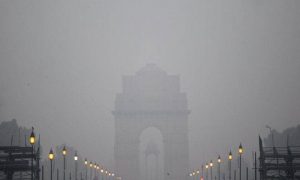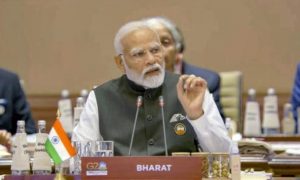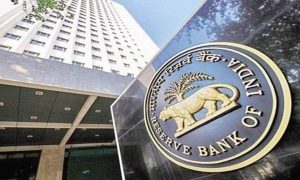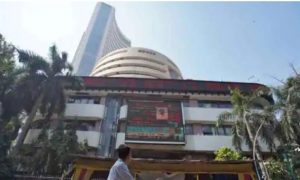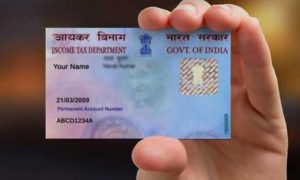The stretch between Sohna in Haryana and Dausa in Rajasthan is the first leg of the new Delhi-Mumbai expressway. With the section almost ready, commuters can expect a better journey between the two cities with reduced travel time, though there has been no official announcement of the dates
For those commuting between Delhi and Jaipur, the Delhi-Mumbai expressway may soon offer an alternate route as the Sohna-Dausa section is almost ready for inauguration. So far, people from the two cities, Delhi and Jaipur, were connected by national highway (NH) 48.
A number of reasons are impacting traffic on the NH-48 stretch between Delhi and Jaipur, including poor maintenance at several places and ongoing road-improvement projects at other locations. Local traffic also impacts commuter speed and adds to the overall travel time on the highway.
Read More: Uttarakhand: Badrinath Portals to Open on April 27
The stretch between Sohna in Haryana and Dausa in Rajasthan is the first leg of the new Delhi-Mumbai expressway. With the section almost ready, commuters can expect a better journey between the two cities with reduced travel time.
While there has been no official announcement of the dates, it is expected that the stretch will be open to the public in the coming days.
To understand how the Delhi-Mumbai e-way offers a better route for commuters, we first have to understand how an expressway is different and better from a highway.
According to the ministry of road transport and highways (MoRTH), highways are the arterial roads for the inter-state movement of goods and passengers. National highways traverse the length and width of the country connecting the national and state capitals, major ports, and rail junctions, and link up with border roads and foreign highways.
In India, NHs are at-grade roads, while expressways are controlled-access highways where entrance and exit are controlled by the use of ramps that are incorporated into the design of the expressway.
So, in simpler words, stretches of national highways have open access to all kinds of traffic, sometimes leading to congested stretches of a city, including markets where slow and fast-moving vehicles can merge without any checks. An expressway is a segregated road that bars entry of slow-moving vehicles and permits only fast-moving vehicles and are meant to carry through traffic.
According to MoRTH, expressways offer superior highway facilities with higher specifications. They provide for more lanes, better surfaces, divided carriageways, controlled access grade separations at crossroads, and fencing.
DELHI-JAIPUR SECTION OF NH-48
The NH-48 starts in Delhi at the foot of the Dhaula Kuan flyover and passes through Mahipalpur, Gurugram, Manesar, Rewari, Neemrana, Behror, Kotputli, and Shahpura before exiting towards NH-21/NH-52 in Jaipur. The drive takes nearly 4.30 hours to 5 hours depending on the traffic.
Read More: Delhi HC’s New Guidelines for Medical Examination of Rape Victims Where Pregnancy Exceeds 24 Weeks
Speaking to News18, a MoRTH official said that the Delhi-Jaipur national highway is an important link for the socio-economic connectivity of the two cities. “The upkeep of this stretch is a high priority for NHAI and it is making all-out efforts to ensure safe and smooth travel for the commuters.”
In October 2022, a team of officials from MoRTH and the National Highways Authority of India (NHAI) visited the Delhi-Jaipur section of NH-48 from Delhi to Dharuhera and reviewed the pace of maintenance activities being undertaken by NHAI. The contractors engaged were directed to complete the work at the earliest.
The repair work and reconstruction on the 225-km-long Gurugram-Jaipur section has been awarded to three different contractors. One agency has been engaged for the 64-km-long Haryana portion and the 161-km-long Rajasthan portion has been awarded to another agency for faster construction.
A third contract has been awarded for the construction of 15 new structures to resolve the frequent issue of traffic congestion on the highway. The cost of all these works is Rs 913 crore. In December, the repairing and re-carpeting of the stretch began.
WHY DOES SOHNA-DAUSA E-WAY OFFER HOPE?
The current distance between Jaipur and Delhi is 277 km, but with the e-way, it will be 285 km. Even though it is going to increase the distance between Delhi and Jaipur by about eight kilometres, the travel time is expected to be reduced by 1.6 hours since there will be no slow-moving vehicles or local traffic on the expressway.
The opening of the Sohna-Dausa section of the Delhi-Mumbai expressway will reduce the burden on the existing Delhi-Jaipur highway along with congestion in Gurugram.
The MoRTH official said that the Sohna-Dausa section of the Delhi-Mumbai e-way will ease traffic on NH-48.
“Alternate connectivity from Delhi to Jaipur has been envisaged through the development of the Delhi-Dausa section of Delhi-Mumbai expressway in conjunction with the Dausa-Jaipur section of NH-11,” the official said, adding that the expressway intersects the already developed Agra-Jaipur section of NH-11 near Dausa.
WORK ON NEARLY 500 KM ABOUT COMPLETE ON DELHI-MUMBAI E-WAY
The work on the 1,386-km Delhi-Mumbai expressway is underway at a high pace, with nearly 100% physical progress on a 500-km stretch across four states – Haryana, Rajasthan, Madhya Pradesh, and Gujarat, NHAI data up to December 30 last year shows.
Work is completed on at least nine packages accounting for 268 km – four packages each from Rajasthan (135 km) and Madhya Pradesh (109 km), while one in Gujarat (24 km).
The Delhi-Mumbai expressway, covering Delhi, Haryana, Rajasthan, Madhya Pradesh, Gujarat, and Maharashtra, is being developed at a cost of about Rs 1 lakh crore. Once completed, the expressway will be the longest in India and is expected to halve the commute time between Delhi and Mumbai, from nearly 24 hours to 12 hours, and shorten the distance by 130 km.
Further, officials say, it will improve the connectivity to economic hubs such as Delhi, Mumbai, Jaipur, Kishangarh, Ajmer, Kota, Chittorgarh, Udaipur, Bhopal, Ujjain, Indore, Ahmedabad, Vadodara, and Surat, bringing economic prosperity to millions.




